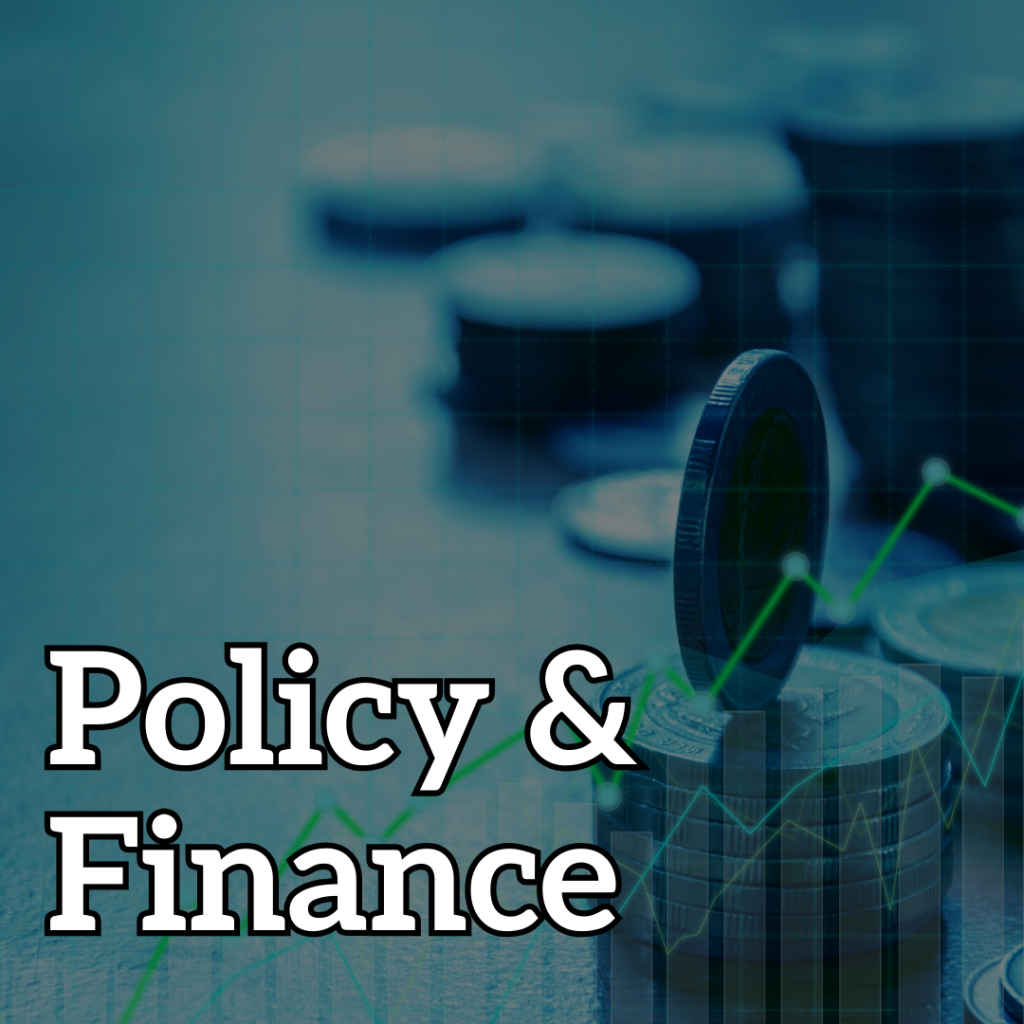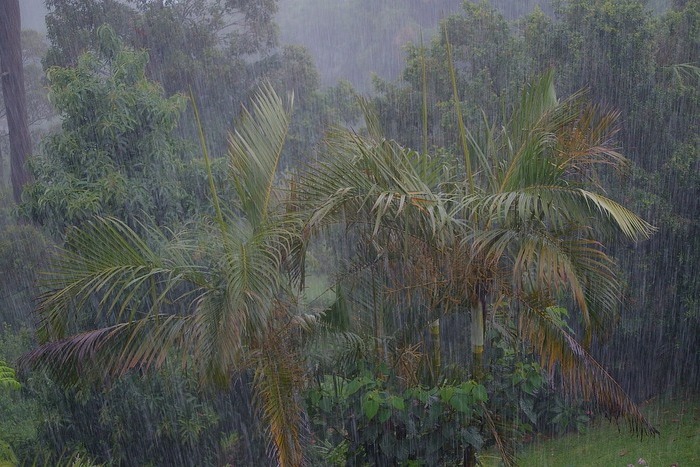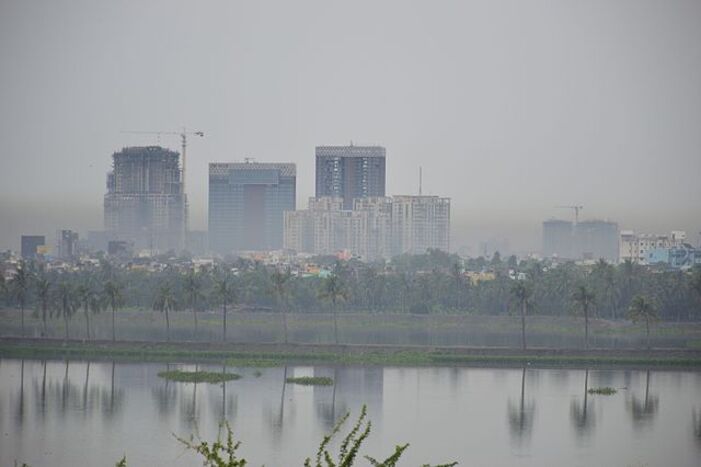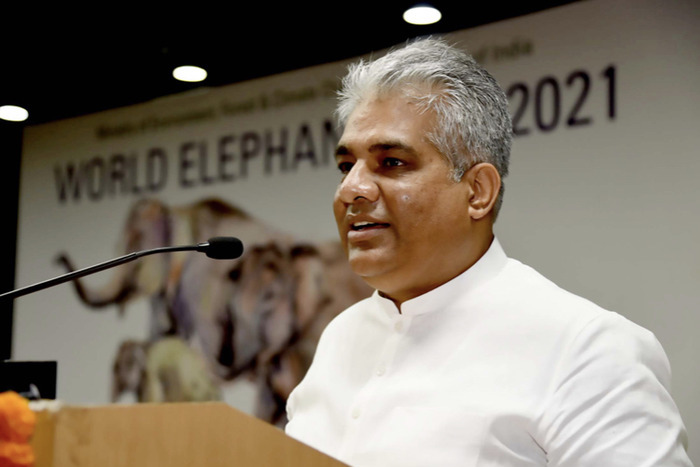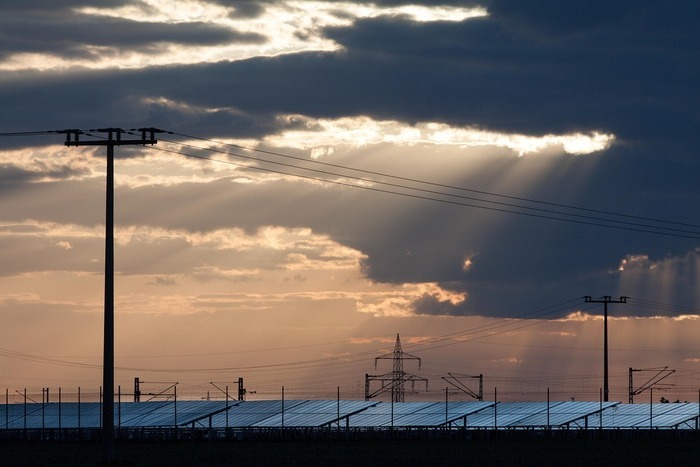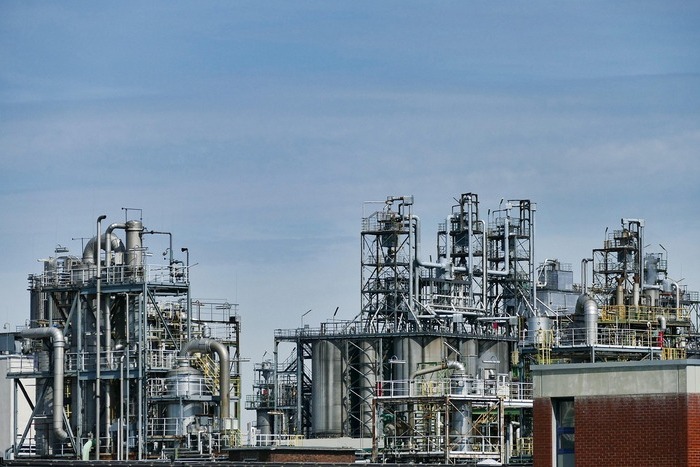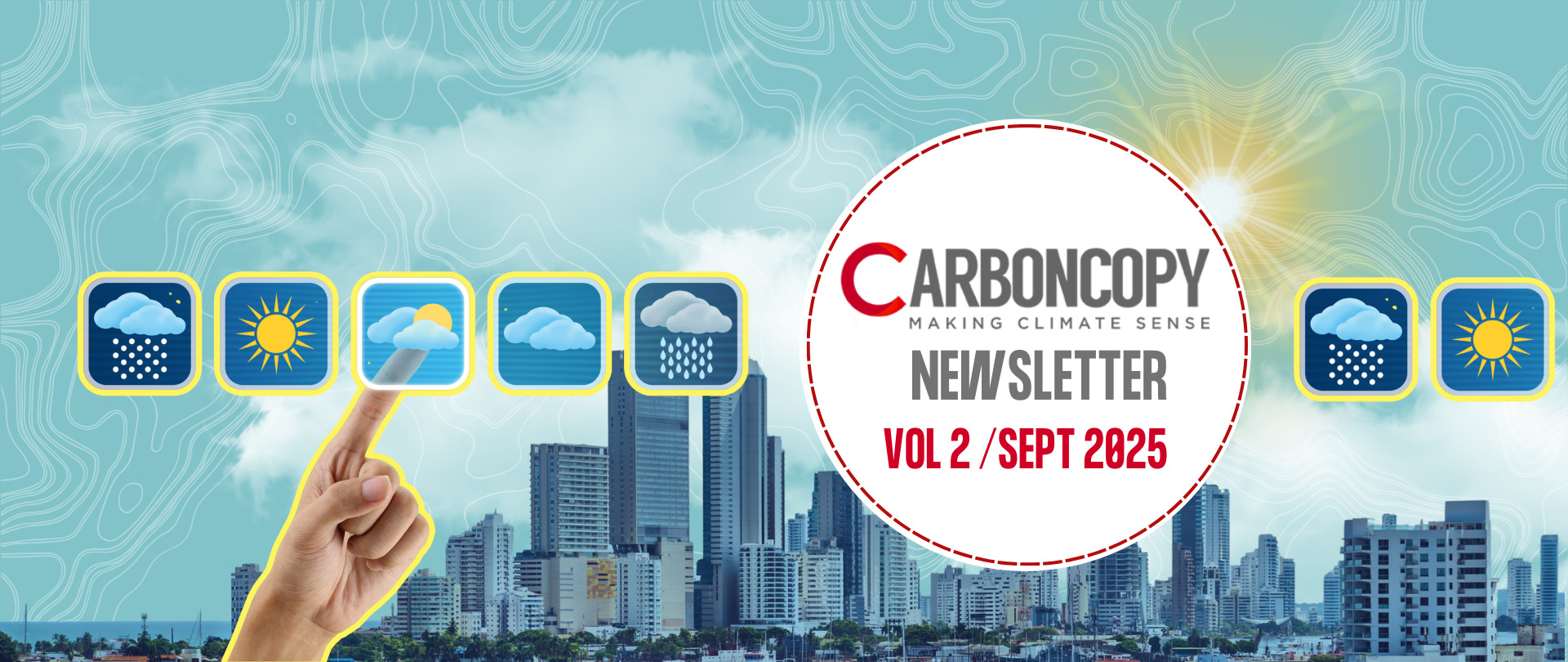
Most startups are betting on AI for better forecasting. Photo: Riddhi Tandon
Can Private Players Reinvent India’s Forecasting Future?
Part two of CarbonCopy’s series on India’s weather warnings explores how startups and private players are betting on AI, satellites, and new data streams to plug forecasting gaps. While facing hard questions of scale, trust, and integration
In the first part of this series, CarbonCopy explored why India’s weather forecasts so often fall short. Despite major investments in satellites, radars, and data networks, the India Meteorological Department (IMD) has struggled to predict the intensity of extreme rainfall, flash floods, and cloudbursts, especially in regions with complex terrain like the Himalayas. Scientists told CarbonCopy that rainfall is inherently harder to model than heat waves or cyclones, and that even with the best global systems, hyperlocal extremes remain difficult to pin down.
The impact of heat and changes in weather patterns have begun to show serious impacts on the economy in India, one of the world’s worst climate-change-affected nations. The rising and monsoon swings are affecting agriculture, which employs about 45.67% of the population and flooding and landslides caused by erratic monsoons is affecting cities and fragile Himalayan states. This comes at a time when multilateral cooperation is collapsing as was evident in the US cutting funds for National Oceanic and Atmospheric Administration (NOAA) that might affect India’s weather monitoring and forecasting capabilities in the long run.
That leaves India at a crossroads. IMD, which has been operational for the last 150 years, is still the country’s backbone for weather and climate data. Its improved cyclone predictions have saved thousands of lives, and initiatives like Mission Monsoon, launched in 2012 by the Ministry of Earth Science to improve accuracy of monsoon rainfall forecast, promise further upgrades. But the hardest forecasting challenges demand new approaches, fresh data sources, and tools that move faster than traditional models.
Enter India’s growing band of startups. These companies are not trying to replace IMD, which remains the country’s only official forecasting authority. Instead, they are carving out space to complement it. Some are building AI-driven systems that refine predictions at the village or city level. Others are launching hyperspectral satellites or using thermal mapping to track heat islands and flood risks. Together, they are positioning themselves as “force multipliers,” capable of filling gaps that the national system, by itself, cannot bridge.
This second part of the series looks at how private players — from early-stage ventures to space-tech firms already working with NASA — are reshaping what forecasting can mean in India. Their promise lies in speed, precision, and new kinds of data. But there are limits. Startups are young and untested at scale. Their models may be sharp in one city, but unproven nationwide, and commercial incentives sometimes push them toward niche clients instead of public warning systems.
The question, then, isn’t just whether startups can innovate. It’s whether they can embed themselves into India’s broader forecasting ecosystem in a way that truly saves lives.
The focus is on Granular Data and Artificial Intelligence
For most startups, the pitch is simple. Artificial Intelligence (AI) can do what physical models alone cannot. Take ClimateAi for example, which builds climate risk models that help businesses plan for disruptions in the long term. Its model can learn the complex relationships like how global phenomena like the El Niño (the periodic warming of the Pacific that can suppress monsoon rains), La Niña (the cooling of the Pacific ocean that amplifies Monsoon rains), and Madden-Julian Oscillation (MJO, causes wet and dry phases every 30-60 days) and Southern Pacific Monsoon affect monsoon, argues founder Himanshu Gupta. AI-driven technology is also cheaper and faster to update as soon as new data is available, according to him.
Other start-ups are chasing hyperlocal insights. SatLeo Labs, an Ahmedabad based start-up, captures infrared bands through satellite sensors to detect temperature fluctuations on the Earth’s surface – what it calls “thermal intelligence.” SatLeo refines this data with AI to map heat islands and flag risks like wildfires. It is already working with the municipality of Tumakuru in Karnataka.
Academic institutes are also looking into AI solutions. At IIT Kanpur’s Kotak School of Sustainability, Professor SN Tripathi and his colleagues are working on integrating physical models, statistical methods, and machine learning for better accuracy. “We start with what data we have from the past and we try to predict what’s going to happen today and if we have more and more information available at the local level then the AI model will be able to learn it and get more accurate information,” says Professor Tripathi.
The appeal is obvious. According to Professor Tripathi, current IMD models can gauge weather patterns for tracts going up to 6 sq kms. This is not enough, especially in hilly areas, where conditions can change over a ridge. Start-ups promise to close that gap.
Going beyond AI
Beyond AI, some ventures are looking to push new domains to observe the earth. Pixxel, a Bangalore based start-up, is building a constellation of hyperspectral imaging satellites. These remote-sensing satellites capture a broad spectrum of light across many wavelengths, producing detailed data on surface materials and vegetation, especially in hilly terrain regions.
But Pixxel’s focus isn’t short-term weather. “Our focus is climate intelligence: using hyperspectral satellites to monitor and address long-term environmental challenges, strengthening national Earth observation capabilities and climate monitoring,” Awais Ahmed, founder and CEO of the startup, told CarbonCopy.
Ahmed claims their data can be used to monitor methane emissions and other atmospheric pollutants at a fine-grained level, which traditional satellites cannot capture.
Who is buying these technologies?
These startups don’t deliver weather forecasts directly to the public yet. Instead, they’re building this data primarily to cater to their clients, which include governments and corporations. IMD itself has signed an MoU with Google for sharing cyclone-related advisories in the Regional Association (RA) II Asia region, which includes areas like East Asia, South Asia, Central Asia, and West Asia, and for the development of short-term or nowcast techniques for prediction of location-specific rainfall. It is also open for Public-Private Partnerships (PPP) in the dissemination of forecast and warning messages related to agricultural services.
The Indian National Space Promotion and Authorisation Centre (IN-SPACe), under the department of Space, had recently announced the PPP with Pixxel and other companies for climate change monitoring, disaster management, agriculture, infrastructure, marine surveillance, national security, and urban planning. The aim for this partnership is to build India’s first indigenous commercial Earth Observation satellite.
Private sector enterprises are also a very big market for these companies. ClimateAi, a US-based company, has built their client base in the food, agriculture, finance, and FMCG sectors to help them adapt to climate disruptions. In India, they have collaborated with ITC to generate precise climate risk forecasts for specific times and crops, providing adaptation insights such as weather based crop-guidance and crop calendar for farm planning. In November 2023, this FMCG conglomerate launched the app called ITC Metamarket for Advanced Agriculture and Rural Services (MAARS), which claims to help farmers as well as ITC’s Agri and Food businesses.
SatLeo Labs, as CarbonCopy mentioned earlier, is currently working with the Tumakuru municipality to identify heat zones and monitor landfill emissions.
Investors seem to be responding by placing big bets on these technologies. SatLeo raised ₹28 crore ($3.3 million) in their pre-seed round led by firms like Merak Ventures, Huddle Ventures, Java Capital, IIMA Ventures and angel investors like Manish Gandhi and Dheer Baldua. Meanwhile, Pixxel has raised a total of $95 million from investors like M&G Catalyst, Glade Brooke Capital, Google, Radical Ventures and Lightspeed.
According to Grandview Research, the private weather forecasting space in India is currently valued at $114.9 million and is projected to reach $174.3 million by 2030 growing at a compounded annual growth rate of 7.2%.
But the success of these startups is difficult to identify yet as they are still at a nascent stage. They have not had any case study so far in India which can prove that the technology can work on a national scale.
Limitations
One of the biggest limitations is that many of these technologies focus on heat, emissions, or land-use, which are easier to model than extreme rainfall. Dr. Krishna AchutaRao, Professor at the Centre for Atmospheric Science in IIT Delhi, says, “Extreme heat events are a lot easier to predict as temperature variations are less sharp as compared to rainfall, making heat distribution more uniform across larger areas. High and low pressures in the atmosphere also help in predicting heat events with a minimum of four to five days of advance warnings.”
Other limitations that come across for these startups are that they are acting in silos. SatLeo Labs which uses geothermal intelligence for their climate forecasting looks solely at the surface temperature. It does not include other forecasting parameters such as ground observations and other data sets. Shravan Singh Bhati, co-founder and CEO of SatLeo says, “Currently, we are solely working on geothermal intelligence and scaling it will take a lot of time.”
Pixxel, which is working on hyperspectral imaging, however, does not solely rely on it. Rather, they integrate it with complementary data sources such as LiDAR, SAR, and Aurora, which is their Earth observation studio, and also validate it with ground-truth data.
Currently, private forecasting startups cater to businesses seeking insights, not the government. Experts believe their insights could only be beneficial if it is complementary instead of replacing state capabilities.
“Privatization must be carefully coordinated,” said Dr. Raghavan Krishnan, retired scientist from IITM Pune. “Government scientists must remain central, with private players brought in to complement, not replace, public capabilities. Strong coordination, capacity building, and collaboration are essential for success.”
Experts’ Analysis of Private Sector’s Role
Most experts agree that startups are useful, but only as supplements. IMD Director General Mrutyunjay Mohapatra himself has welcomed AI and private partnerships, noting that the department’s digitised weather records since 1901 could be a treasure trove for machine learning.
Dr Madhavan Rajeevan, who is a former secretary of the Ministry of Earth Science, says, “They [private players] can fine-tune the data or provide additional data sets to complement the forecasting, but replacing IMD is not going to happen.”
Professor Tripathi argues data from these AI models must be made available in the public domain. He emphasised that these solutions are highly relevant for Global South countries like India, Bangladesh, East Asian countries, and the African subcontinent, which are disproportionately affected by climate change.
However, he is also cautious that technological solutions have their limits. “The AI and forecasting space cannot solve the entire climate crisis,” he said. “Broader changes in consumption patterns, use of resources, and energy dependency, especially in developing countries, are equally crucial.”
Professor AchutaRao said, “Although AI is helpful in leveraging better data and training models, especially for extreme heat, the accuracy of the model depends on the quality and volume of data, which is currently limited, but expected to improve over time.” He adds that forecasts have natural limits — warnings can reduce losses, not eliminate them.
The promise of these private ventures is real. They give access to sharper insights, faster updates and more granular data. But their limits are real, too, such as unproven accuracy, and the risk of commercialisation. The real test will be whether startups can embed their innovations into India’s broader forecasting ecosystem, not just as niche services for clients, but as effective tools for national resilience.
At least 10 people have died in rain-related incidents across Maharashtra, while more than 11,800 people have been rescued from flood-affected areas. Photo: Pixabay
At least 10 dead in heavy rain in Maharashtra, Mumbai crosses 3000 mm threshold
At least 10 people have died in rain-related incidents across Maharashtra, while more than 11,800 people have been rescued from flood-affected areas. According to the State Disaster Management Department, four deaths were reported in Nashik district alone. Two deaths each occurred in Dharashiv and Ahilyanagar, while one each was reported in Jalna and Yavatmal districts, the Indian Express reported.
The India Meteorological Department (IMD) issued an orange alert for four districts – Mumbai suburban, Raigad, Thane and Palghar – warning of heavy to very heavy rainfall. This comes as coastal Maharashtra faces incessant downpour, with rainfall in Mumbai crossing the 3,000 mm threshold for this monsoon season.
Kolkata: heaviest downpour in 37 years ahead of Durga Puja festivities, 10 dead
Kolkata received its heaviest rainfall in 37 years causing severe waterlogging, flooding and traffic snarls, reported HT. The downpour also caused several electrocutions, which resulted in the deaths of at least 10 people.
India Meteorological Department (IMD) officials said the rate of rainfall was only 2 mm short of a cloud burst. Kolkata received 98 mm of rain every hour. IMD declares a cloud burst when the figure is 100 mm an hour.
West Bengal CM Mamata Banerjee posted on Twitter that the Damodar Valley Corporation and Kolkata’s power utility CESC, were responsible in part for the distress and suffering that the record-breaking torrential rains brought upon state citizens just days before the Durga Puja festivities.
Monsoon ends on Sep 30, with above normal rainfall, second year in a row
The Southwest Monsoon officially ended on September 30, with above-normal rain for the second year in a row, which “bodes well for agricultural output as well as the rural economy,although extreme weather events in hill states and floods in Punjab have wreaked significant human and economic damage,” the HT reported.
As on September 26, rainfall was 7% excess across the country with a 28% excess over Northwest India; 12% excess over Central India; 8% excess over South Peninsula and a 19% deficiency over east and Northeast India, the newspaper report said adding that the monsoon was above normal last year also with rainfall that was 108% of the long period average (LPA) (the average between 1971 and 2020 which stands at 87cm). In 2023, there was below normal rain at 94% of LPA, the outlet added.
La Nina likely to bring in colder winter in north India
A colder winter is expected in north India this year according to meteorologists, who attribute this to La Nina conditions that are likely to prevail from October to December, reported the HT.
The newspaper said a weak La Nina emerged last December, but did not sustain. From early December 2024 through February 2025, below-average sea surface temperatures (SSTs) persisted in the east-central and central Pacific. During February-March 2025 and late May-August, above-average SSTs were observed in the eastern Pacific. Since the end of March, SSTs have returned to near average across most of the equatorial Pacific Ocean.m, the newspaper explained.
Super Typhoon Ragasa kills at least 14 in Taiwan as Hong Kong and southern China brace for impact
At least 14 people have been killed after Super Typhoon Ragasa hit Taiwan and left 124 missing after its torrential rains caused a barrier lake to burst, “unleashing a wall of water”, AFP reported. AFP said that the typhoon has forced “Chinese authorities to shut down schools and businesses in at least 10 cities”. Southern China’s Guangdong province has upgraded its typhoon alert to the highest level and evacuated more than 371,000 people across the province in preparation for the typhoon’s arrival, SCMP reported. The New York Times reported that, in total, one million people have been evacuated in China as the storm approaches.
Wildfires delaying formation of snow cover in the Arctic: Study
Wildland fires in seasonally snow-covered areas can have lasting effects on both the snowpack and carbon stocks. Using long-term satellite data, researchers showed that from 1982 to 2018, the burned area in the Arctic has significantly increased, while the duration of snow cover has significantly decreased, Nature reported. An XGBoost machine learning model and causal analysis confirmed the role of wildland fires in delaying snow cover formation, with this effect strongly linked to fire-induced reductions in albedo and increases in temperature.
Scientists said they observed a delay of more than 5 days in snow cover formation following major wildland fires. Projections under a high-emissions scenario (Shared Socioeconomic Pathway, SSP 5-8.5) indicate that the burned area could increase by a factor of 2.6 and the annual mean snow cover duration could decrease by nearly 18 days between 2015 and 2100 compared with the historical average, the research paper said.
Climate change expanding summer, reducing spring, autum, winter: Study
Climate change has fundamentally altered global seasonal patterns, expanding the duration of summers, new research found. Scientists develop a standardised 5d temperature-based classification system for seasons from 1971 to 2021 using the fifth-generation ECMWF atmospheric reanalysis (ERA5). The analysis revealed a pronounced redistribution of seasonal durations. Specifically, summer expanded by 3.2 % grid globally, while spring, autumn, and winter decreased by −2.8 %, −12.1 %, and − 0.9 % in 2021, respectively, compared to 1971.
Heat stress in India turning chronic kidney disease into epidemic
An epidemic of CKDu (chronic kidney disease), not linked with known precursors like high blood pressure or diabetes, is on the rise in heat-stressed India, reported Yale Environment 360. Outdoor labourers (mostly in rural areas) working in extreme temperatures in India without breaks for rest in the shade, access to drinking water, and clean bathrooms (to relieve themselves), are increasingly developing chronic kidney disease, the report said.
CKDu exists in 35 countries including India, which lacks a national registry or database that tracks CKDu diagnoses. Experts warn that rising temperatures linked to climate change are increasing outdoor workers’ exposure to excessive heat, high humidity, and dehydration — factors that are linked with acute kidney injury, which diminishes the organs’ ability to filter waste products from blood. Left untreated, kidney injury can lead to a range of health complications — including pericarditis and pulmonary embolism — that can be fatal.
India may announce an updated climate action plan “during, or just ahead of” COP30. Photo:Wikimedia Commons
India to release updated climate plan ‘during, or just ahead’ of Brazil COP in Nov
India may announce an updated climate action plan “during, or just ahead of” COP30, the Indian Express reported citing government sources. The newspaper added that the updated pledge is “unlikely to promise anything new apart from making an upward revision” of the three targets its current pledge commits to – reducing the emissions intensity of its GDP, increasing the share of renewables and expanding its carbon sink – and extending them to 2035. India has also said its third nationally determined contribution (NDC) might “reflect the disappointment of the climate finance outcome at COP29 in Baku”, the report said.
The Hindu cited government sources saying India will submit its third NDC on 10 November, with an “increased target for energy efficiency improvement”. The newspaper report said that major emissions reductions could result from “bilateral agreements between countries where developed and developing countries jointly invested in clean-energy projects and shared the resulting cut in emissions” under Article 6 carbon markets
‘Recall verdict that allowed widening of roads in Himalayas” BJP veteran MM Joshi, Karan Singh appeal to CJI
BJP veteran leader Murli Manohar Joshi and former Union minister Karan Singh have appealed to Chief Justice of India B R Gawai seeking a “review and recall” of the apex court’s 2021 judgment which allowed widening of roads under the Char Dham project to 12 metres, alleging that it has resulted in massive landslides and sinking zones, the IE reported.
The plea has been endorsed by 57 people, including historian Shekhar Pathak and author Ramachandra Guha. Academicians, scientists, current and former MPs and activists in Uttarakhand are the others who have endorsed the appeal, the IE reported.
Joshi and Singh said a 2020 circular of the Ministry of Road Transport and Highways, which allowed the widening, should be quashed and an intermediate road width of 5.5 metres should be adopted as discussed previously. They said building a double-laned paved-shoulder road on the pristine Uttarkashi to Gangotri stretch will wreak avoidable damage in the fragile area, which is already witnessing “unprecedented disaster events” this year., the outlet added.
China plans to cut 10% emissions by 2035
China will reduce its planet-warming pollution by 7% to 10% from peak levels by 2035, “the goal, announced in a pre-recorded video by Chinese President Xi Jinping at a UN General Assembly climate meeting, falls far short of the 30% cuts the Biden administration had been pressing for,” reported CNN adding that China’s growth in renewable energy manufacturing and domestic deployment mean that it may overachieve — which it has done on previous goals.
The news channel said China gave itself until “around” 2030 to peak its climate pollution. Independent analysis shows it is likely this peak has already happened, five years ahead of schedule, and pollution is now starting to decline, the report said.
Australia has also raised its climate ambition, with Prime Minister Anthony Albanese announcing a new 2035 emissions reduction target of 62–70% (from 2005 levels). The goal, unveiled on 18 September, marks a sharp step up from the country’s 2030 target of 43%.
Trump at the UN: Climate change is a con job
US President Donald Trump in his speech at the UN general assembly called climate change the “greatest con job ever perpetrated on the world”, reported Reuters. The news wire said Trump “spoke for several minutes out of his near-hour speech on climate change”, criticising the EU for “reducing its carbon footprint, which he claimed has taken a toll on its economy”, and “warning countries that have invested heavily in renewable energy that their economies will suffer”. Trump said: “All of these predictions made by the UN and many others, often for bad reasons, were wrong.” Evaluating the performances of the past climate models scientist Dr Zeke Hausfather responded to Trump’s claim on Bluesky, saying climate projects have been “pretty spot on”.
The New York Times said Trump also criticised wind turbines and accused environmentalists of wanting to “kill all the cows”. “He chose his two targets, demonising immigrants and green energy, and called them a ‘double-tailed monster’ that he claimed, without evidence, are ‘destroying’ Europe. Both subjects play well to his base in the Republican Party. But it was remarkable that he said all this to a global audience,” the newspaper said. The article noted that Trump’s speech “added up to an extraordinary diatribe that ignored the human suffering exacted by the heatwaves, wildfires and deadly floods that are aggravated by the burning of fossil fuels and, at the same time, stood at odds with the rapid expansion of renewable energy all over the world.”
Bloomberg wrote that Trump criticised the UK for ending new drilling in the North Sea in his speech: “There’s tremendous oil that hasn’t been found in the North Sea. They essentially closed it by making it so highly taxed that no developer, no oil company, can go there.” Carbon Brief pointed out that the output from the North Sea is already in decline. Oil production peaked in 1999, while gas production in the UK continental shelf peaked in 2000.
Bloomberg reported that UK energy secretary Ed Miliband responded by saying: “We are the duly elected government of the UK and we have a mandate for our mission.” The Guardian explained how Trump’s claims at the UN were false and misleading. BBC News said that Trump’s comments are “at odds with [the] overwhelming science consensus”.
China’s emissions will decline by 2030 if it continues green investments
China’s emissions are expected to peak in 2028 at 11.3bn tonnes and begin to “decline by 1.6bn tonnes by 2030 if the country manages to mobilise 17.5tn yuan ($2.5tn) in green investments over the next five years, said a latest report by investment bank the China International Capital Corporation, reported Bloomberg. In a separate article, Bloomberg said China’s “power demand growth” slowed in August, rising by 5% from a year ago, compared with 8.6% in July and 5.4% in June, according to the National Energy Administration (NEA). The article said “cooler weather has helped take some pressure off the grid”. China Energy Net explained that electricity consumption in China reached 1,015 terawatt-hours (TWh) in August. It exceeded 1,000TWh for two consecutive months in July and August – the first time this happens globally, according to financial news outlet Cailianpress, Carbon Brief reported.
EU to delay landmark deforestation law once again citing ‘technical concerns’
The European Commission is set to once again delay the enforcement of its landmark deforestation law blaming “technical concerns” as the reason for delay, reported Bloomberg. The newspaper said: “Sophisticated tracking systems are required to comply with the rules, which would be enforced using the threat of fines. Importers must have collected precise data identifying the plots of land where the goods were grown.” Agence France-Press pointed out the law has been criticised by “key trading partners from the US to Indonesia”. Politico said that businesses have complained that the law would be a “burden” and that the delay represents the latest on the commission’s “war on red tape”.
Production Gap report: Countries planning higher fossil fuel production than they were in 2023
Countries are now collectively planning higher fossil fuel production than two years ago, with projected production of fossil fuels in 2030 exceeding levels consistent with limiting warming to 1.5ºC by more than 120%, a new report titled ‘The Production Gap’ has found, reported HT.
The newspaper said governments now plan even higher levels of coal production to 2035, and gas production to 2050, than they did in 2023, the report by Stockholm Environment Institute, International Institute for Sustainable Development and Climate Analytics said. Just three countries — China, the US, and the Russian Federation — are responsible for more than half of global extraction-based emissions from all 2022 fossil fuel production.
Planned oil production also continues to increase to 2050. These plans undermine countries’ Paris Agreement commitments, and go against expectations that under current policies global demand for coal, oil, and gas will peak before 2030, the report warned.
At COP28 in Dubai, countries had agreed to transition away from fossil fuels in a manner that is “just” and “equitable.” This also includes phasing out of inefficient fossil fuel subsidies or subsidies that do not address energy poverty
Europe’s bill for extreme weather damage more than doubles this decade
Extreme weather and climate change caused “more financial damage in Europe between 2020 and 2023 than it did in the whole preceding decade”, The Financial Times reported, Citing a new report from the European Environment Agency (EEA), the newspaper said the average annual costs reached €44.5bn during the latest four years, some two-and-a-half times higher than in the decade to 2019, according to the agency’s reportThe Guardian said that: “EU officials warn climate breakdown and wildlife loss ‘are ruining ecosystems that underpin the economy’.
Central Pollution Control Board (CPCB) should help in capacity building in environmental matters, and become a mentor to ensure compliance with regulations. Photo: Wikimedia Commons
CPCB should help industry meet green norms: Environment Minister
Environment Minister Bhupendra Yadav said his ministry’s August 29 notification to set up a system of registered environmental auditors (EAs) to “supplement, not replace” pollution control boards is being done to encourage industry to self-regulate and end inspector Raj, reported the HT.
The minister said The Central Pollution Control Board (CPCB) should help in capacity building in environmental matters, and become a mentor to ensure compliance with regulations, Union, reported the HT.
Speaking at the 51st Foundation Day of CPCB, he said the agency will play a role in achieving “Make in India” in manufacturing.
He stressed on “behavioural change” for rules and regulations to be effective. “These rules are designed to supplement the existing monitoring and inspection framework of the government, not to replace it” Yadav had said.
The newspaper explained: “Tier-1 comprises existing government regulator-based review of compliance, including by government agencies like CPCB, State Pollution Control Boards (SPCBs) and regional offices of the ministry; and tier-2 comprises environment auditor-based mechanism.”
“Because when we establish an industry, then they should produce and self regulation should be in place. For environmental norms, we have talked about environmental audits so that our inspector raj is reduced, people can submit their audit reports through a system of environment auditors,” Yadav said.
Delhi, Mumbai record highest level of ground level ozone pollution : CPCB
Delhi and Mumbai are the top two of 10 Indian cities that breach the safe levels for ground-level ozone, the Central Pollution Control Board recently informed the National Green Tribunal (NGT), reported the Telegraph. The CPCB analysed safety limits of ground ozone levels at 178 monitoring stations across 10 cities in 2023.
A total of 25 stations of the 57 in Delhi, and 22 of 45 in Mumbai reported ozone levels beyond the safe limit of 2% for eight hours, the newspaper reported.
Out of all 178 monitoring stations, the safe limit was breached at 65. The CPCB said the elevated ozone levels might be attributed to emissions from the transport sector, power plants and industrial activities.
Over 60% of 125 villages in Greater Noida has no sewer system
In UP’s Greater Noida over 60% of villages have no sewer system, Greater Noida Industrial Development Authority (GNIDA) informed the National Green Tribunal, TOI reported. The waste management is being carried out by de-sludging, for which 35 de-sludge vehicles are used, the newspaper added. GNIDA said out of 124 villages in its command area, only 115 were identified as requiring some sort of sewer management, and 46 villages are connected to sewage treatment plants (STPs), but 100% household connections have been achieved in 25 of them, and connections in 21 more villages are underway, the report said.
Air pollution causes shorter sleep finds global study
Air pollution causes shorter, lower-quality sleep, according to the findings of an international evidence review that published the global meta study, the Guardian reported. Dr Junxin Li, of the Johns Hopkins University School of Nursing, who led the review, said: “long-term exposure to outdoor pollutants such as particle pollution, nitrogen dioxide and even carbon dioxide was linked to shorter or lower-quality sleep.”
Cutting average particle pollution (PM2.5) in half – from typical levels found alongside busy London roads down to the World Health Organization guidelines – could trim the likelihood of poor sleep in middle-aged and older adults by roughly one in 10, she said.
People who used solid fuel, such as wood or coal, had worse sleep quality, including insomnia and short sleep duration.
India is on track to add over 45 GW during the fiscal year 2026. Photo: Pixabay
India to add 45GW solar capacity in FY 2026: Study
India is on track to add over 45 GW during the fiscal year 2026, according to a new report by SBICAPS. The country installed 18 GW of solar power capacity in the first five months of FY 2026, PV Magazine reported.
Rooftop and open-access solar (aside from utility scale solar) have grown: Over 20% of the new solar additions now comprise rooftop and off-grid systems, significantly higher than in the previous years, the outlet reported.
The latest cut of goods and services tax (GST) on solar equipment from 12% to 5%, will reduce installation and maintenance costs and catalyze the adoption of solar by residential, commercial, and industrial users.
On the manufacturing front, solar module capacity under ALMM-I (Approved List of Models and Manufacturers for modules) has crossed the 100 GW, SBICAPS report said. .
India opens anti-dumping probe against solar component imports from China
The Commerce Ministry’s wing DGTR initiated an anti-dumping probe into the import of a solar component and mobile covers from China, following complaints by RenewSys India and All India Mobile Cover Manufacturer Association, the ET reported.
The applicant claimed that the industry is impacted due to the dumped imports of “Solar Encapsulants, excluding EVA Encapsulants” from China. The item is used in the manufacturing of solar PV modules.
If it is established that the dumping has caused material injury to domestic players, the DGTR would recommend the imposition of the levy on imports, the newspaper added.
The finance ministry takes the final decision to impose duties.Anti-dumping probes are conducted by countries to determine whether domestic industries have been hurt because of a surge in cheap imports.
India plans umbrella law for nuclear energy, special tribunal for disputes
As India plans to open a “highly restricted N power ecosystem” to private players, the country is mulling a single umbrella law for “all nuclear energy related issues, replacing existing laws,” the ET reported.
The newspaper added that “the Centre is also planning to set up a specialised tribunal to address all N-energy disputes besides a specialised authority on nuclear safety which will work in close coordination with the International Atomic Energy Agency” the newspaper said.
The proposed “architecture of nuclear energy allows private players in at least four to five areas including exploration and mining of atomic minerals to the critical area of fuel fabrication, all in the hands of the government right now,” the report said.
To assure corporate accountability centre plans “to create a special vertical”, “centred on nuclear safety and safeguards without will work in coordination with IAEA,” the outlet reported, adding that this special authority will be able to deploy inspectors across all nuclear reactors in the country who will keep account of each gram of nuclear fuel “from procurement to usage and disposal”. The Centre is also mulling to set up a special tribunal for all atomic energy related disputes.
Too few transmission lines? 50 GW of clean energy stranded due to transmission infra bottlenecks, says IEEFA
India’s clean energy transition is being hampered by transmission infrastructure struggling to keep pace with the growth of renewable energy generation, a new report by the Institute for Energy Economics and Financial Analysis (IEEFA) and JMK Research & Analytics said. The report revealed that over 50 gigawatts (GW) of renewable energy capacity is stranded nationwide as of June 2025, delaying projects, inflating costs, and undermining investor confidence, DTE reported.
In FY25, India added just 8,830 circuit kilometres (ckm) of transmission lines against a target of 15,253 ckm, reflecting a 42% shortfall, with inter-state additions hitting their lowest level in a decade. This widening gap between generation and evacuation has created systemic inefficiencies, the outlet added.
Analysis shows up to 71% of India’s interstate corridors operate below 30% utilisation, highlighting the mismatch between infrastructure and power flows.
China’s solar installations fall to near three-year low
A total of 7.4 gigawatts (GW) of solar capacity was added in China in August 2025, falling from 11GW in July and hitting the “lowest level in nearly three years”, according to data released by the National Energy Administration (NEA), Bloomberg reported. However, China’s solar module exports surged 9.5% year-on-year in August, reaching $2.4bn, the outlet says, citing customs data. Industry news outlet BJX News reported that, in the first eight months of the year, China’s total power generation capacity increased by 18% compared to the same period last year, with solar power and wind power capacity growing by 48% and 22%, respectively, during the same period.
Photo: Wikimedia Commons
BYD and Tesla’s new battleground for EVs is India
EV giants BYD and Tesla are competing to crack the Indian car market — the world’s third largest, reported Business Insider. But both face steep import duties, and competition from local manufacturers like Mahindra and Tata Motors. India’s EV market will expand in the coming years, and electric car sales could possibly hit the mark of 2-3 million a year by 2030. Tesla has opened showrooms in Delhi and Mumbai, while BYD sold its 10,000th car in India this month.
EVs see uptick in Europe, but Tesla sees decline
In 2025, Europe saw an uptick in the sales of EVs by 26%. However, the Elon Musk-owned Tesla has been facing declining sales, according to a report, while other auto manufacturers are gaining ground. German car maker Volkswagen sold the most number of EVs in Europe in August, growing at a rate of 45% year-on-year. Tesla came in second place, with its sales reducing by 23% compared to last year. The third place went to another German brand BMW which grew by 7% year-on-year.
Investing in technology is key for India’s food security
Securing food and climate resilience, especially in agriculture, is possible only by investing in agri-tech and soil health, according to multiple experts quoted in a Mint report. This has to go hand-in-hand with reworking government policies, farm economics, and technology adoption so that resource poor farmers in remote areas can also benefit. According to the report, unsustainable farming exists in India today due to the artificial deflation of food prices. As alternatives, investing in technologies like hybrid inverters, affordable cooling systems, and innovative financing models can help farmers massively.
High bank guarantee deters foreign EV manufacturers to make in India
While India harbours ambitions of a speedy transition to electric vehicles, the government’s intention of building a robust, domestic manufacturing base has not gained much traction from foreign EV makers. The reason, in part, is due to a significantly high bank guarantee, reported Mint. Manufacturers are necessitated to pay a bank guarantee of at least ₹4,150 crore, or equal to the amount of import duty foregone. So, even though India offers foreign automakers big duty cuts on cars fully built inside the country, it hasn’t worked till now.
Battery gigafactories to be built in India by Tesla Group and SRAM & MRAM
Tesla Group, a leading battery energy storage systems maker, has tied up with the SRAM & MRAM Group, the technology and sustainable development giant, to build EV gigafactories in India and 15 other countries like the US, Malaysia, Oman, Brazil, the UAE, and Cambodia. According to PTI, the companies have struck a $1 billion deal to build five such gigafactories.
India and Australia strengthen critical minerals partnership
In an effort to strengthen battery supply chains, and cut China’s dominance in the sector, India and Australia have boosted a partnership concerning critical minerals. Sanjiva de Silva, the Australian Government’s energy and resources Counsellor based in India, told ANI that both countries have progressed on this front. Projects have been identified, and India has also progressed to the final stages of the competitive process surrounding the process.
India could buy more oil from the US as Donald Trump continues to pressure India and China to lower the purchase of Russian oil. Photo: Pixabay
India to Buy More Oil From US Amid Trump’s Calls to Lower Russian Oil Purchase
The Commerce and Industry Minister Piyush Goel said that India could buy more oil from the US as Donald Trump continues to pressure India and China to lower the purchase of Russian oil, reported Times of India. Higher imports of oil and gas will help the US lower the trade deficit of over $41 billion from India.
The government is also trying to seek the removal of 25% secondary sanctions and the officials said that they are also trying to reduce the 25% of reciprocal tariffs so that the others do not have any comparative advantage.
Trump Resumes Pressures on Europe to Ban Russian Oil
US President Donald Trump has renewed his pressure on the European Union to ban buying Russian oil to put pressure on Russian President Vladimir Putin to end the war on Ukraine, reported Bloomberg.
Direct purchases of Russian oil are banned in the European Union since 2022, smaller amounts of Russian oil still reach Eastern Europe and European nations also import diesel from India and Turkey where Russian crude oil is refined.
October Price of Russian Urals Crude Price Rises In India Despite Growing Sanctions Risks
The price for Russia Urals Crude Oil is up in India despite the growing sanctions risks as Ukraine attacks on ports and pipelines and prompts to tighten sanctions, reported Reuters.
Ukrainian attacks previously disrupted exports in September which heightened the risk of production cuts and forced Russia to send oil to other ports to reduce the impact.
Nayara Energy To Sell Russian Oil on Discount to PSUs As EU Blocks Export
Nayara Energy is in talks with the Indian public sector units (PSU) to sell the petrol and diesel at a $1-2 per barrel discount as EU blocks the entry of Russian oil, reported ET Energyworld.
The Roseneft-backed company is in talks with Indian Oil Corporation, Hindustan Petroleum Corporation, and Bharat Petroleum Corporation to place its refined fuel with them. These oil companies also sought a discount from them
India to launch ₹3,200 crore Offshore Drilling Drive to Cut Imports and Discover Hydrocarbons
State-run oil explorers, Oil India Limited and ONGC are planning to begin a ₹3,200 crore offshore drilling drive to discover new hydrocarbon reserves and cut reliance on imports, reported PTI.
In the first phase of the drive, four wells will be drilled in deepsea of Andaman, Mahanadi, Saurashtra, and Bengal sedimentary basins. Global energy giant BP will be providing the technical expertise in identifying the location as well as drilling.
Oil and Gas Field Output Decline Accelerates due to Reliance on Shale and Offshore Resources
Oil and gas field output have declined with a gathered speed due to higher reliance on shale and deep offshore resources, reported the International Energy Agency (IEA). The report said that without continued investment in these fields, the world could lose the equivalent of Brazil and Norway’s combined production from the global oil balance each year.
Using data from approximately 15,000 oil and gas fields, it was found that after reaching peak production, conventional oil fields experienced an average annual decline of 5.6%, while conventional gas fields saw a decline of 6.8%.
Trump Urges British PM to Explore North Sea for Oil and Gas to Cut Energy Bills
US President Donald Trump urged UK prime minister Keir Starmer to explore the North Sea for oil and gas while calling wind power an expensive joke, reported The Standard. Starmer’s government has ruled out any new licenses in the North Sea, while focusing on renewable and nuclear energy for electricity.
To ensure the price and the cost of energy comes down, they will be relying on the mix of oil and gas from the North Sea and mix it with renewable energy, which is very essential, said Starmer.
Exxon Seeks Trump’s Help to Revoke EU’s Sustainability Law
Exxon, a major company in the oil and gas sector, is seeking help from US President Donald Trump to revoke the European Union’s sustainability law stating that it could push US businesses out of Europe, reported Reuters.
The EU earlier this year brought some changes in the sustainability laws in response to the criticism from businesses and leaders from Germany and France. The oil major’s CEO said that these changes are not enough and should be revoked entirely.




